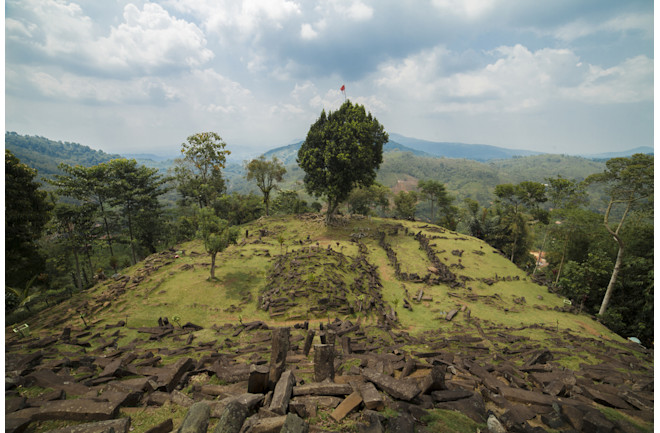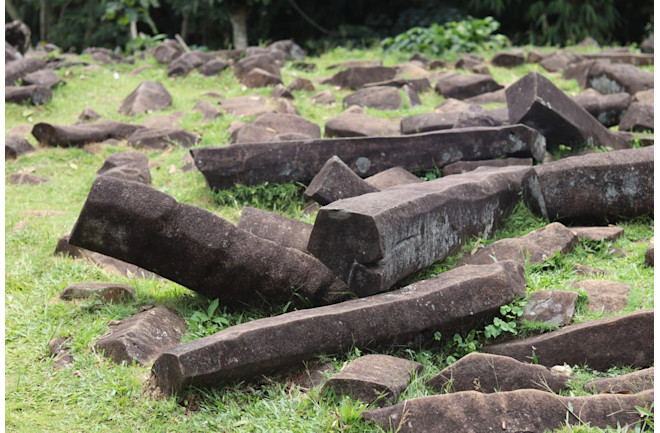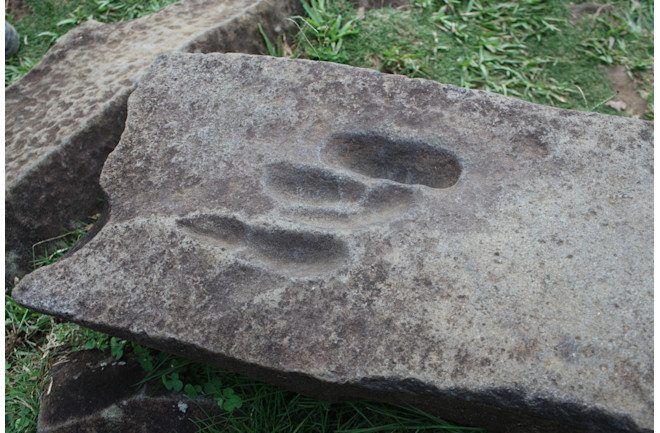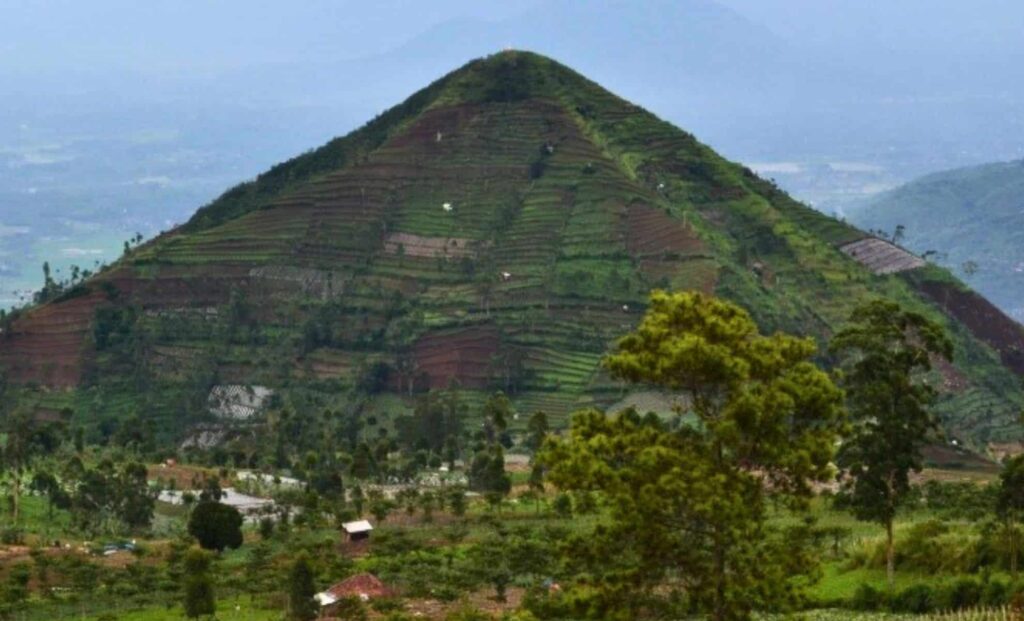Deep within the rugged landscape of West Java, Indonesia, a discovery has the potential to reshape our understanding of ancient civilizations. What appeared to be nothing more than a remote hilltop has now become the subject of heated debate and fascination. Researchers suggest the site could be far older than anyone ever imagined, possibly predating Egypt’s iconic pyramids by millennia. This revelation has sparked intense interest among scientists and archaeologists, who are attempting to unravel the secrets buried beneath the surface.
A Monumental Find in Indonesia
The site in question is Gunung Padang, located in the Cianjur District of West Java. For centuries, local communities have revered the area for its megalithic stone formations and terraces, once thought to be natural in origin. Yet, in recent years, a team of Indonesian researchers led by geologist Danny Hilman Natawidjaja has turned the site into a focal point for groundbreaking archaeological studies. Their work, using advanced techniques like ground-penetrating radar and seismic tomography, suggests that Gunung Padang could be an ancient pyramid, potentially over 25,000 years old.
According to the Discover Magazine, the structure is not just a random collection of stones, but the remnants of a carefully constructed pyramid, consisting of several layers built over millennia. The oldest of these layers, known as Unit 3, could date back to between 16,000 and 27,000 years ago, pushing the timeline of human engineering and civilization back thousands of years. If confirmed, this discovery would place Gunung Padang among the world’s oldest megalithic structures, predating even the Egyptian pyramids.

Layers of Time: A Structure Built Over Millennia
Gunung Padang’s most remarkable feature lies in its layered construction. The site consists of multiple phases, each built at different points in history. Unit 3, the oldest layer, is thought to be the foundation of the pyramid, dating back to the end of the last Ice Age.
Following this, Unit 2 dates to around 7,500 to 8,000 years ago, while the most recent layer, Unit 1, was constructed roughly 3,000 to 4,000 years ago. Each phase reveals a shift in the sophistication of the construction, showing how the site was modified and enhanced over thousands of years.
These findings, made through extensive surveys and drilling, suggest that Gunung Padang may have been a highly significant site, built for religious, ceremonial, or cultural purposes. The discovery of these layers, however, raises further questions: who were the people behind this construction, and how did they possess such advanced knowledge so long ago?


The Controversy Surrounding Gunung Padang
Not all experts are convinced by the data emerging from Gunung Padang. Despite the intriguing findings, some archaeologists have expressed skepticism, questioning the methods and interpretations of Natawidjaja’s team.
Critics argue that the site may simply be the result of natural geological processes, with the stone formations potentially shaped by volcanic activity, not human hands. One such critic, Professor Sutikno Bronto from the Center of Geological Survey in Indonesia, maintains that Gunung Padang is likely the neck of an ancient volcano rather than a man-made pyramid.
Moreover, in 2023, a prominent academic journal retracted a paper on the site’s findings after independent experts raised concerns about the research methodology. These debates have fueled a divide between those who believe that Gunung Padang could indeed rewrite history and those who view the conclusions as overly speculative. Despite this, Natawidjaja remains steadfast in his belief, describing the evidence as “data,” even if it seems extraordinary.


Hidden Chambers and Buried Secrets
One of the most captivating aspects of Gunung Padang is the possibility of hidden chambers beneath its surface. Ground-penetrating radar and seismic tomography have revealed what appear to be underground cavities, sparking speculation that these chambers could house valuable artifacts, religious relics, or even burial sites.
The presence of these hidden spaces suggests that the pyramid-like structure may have been far more complex than initially imagined, with an internal layout that could offer more insights into its purpose.
With ongoing excavations and the application of more advanced dating techniques, Gunung Padang may soon reveal even more about the civilization that constructed it—and whether it truly holds the title of the world’s oldest pyramid.

